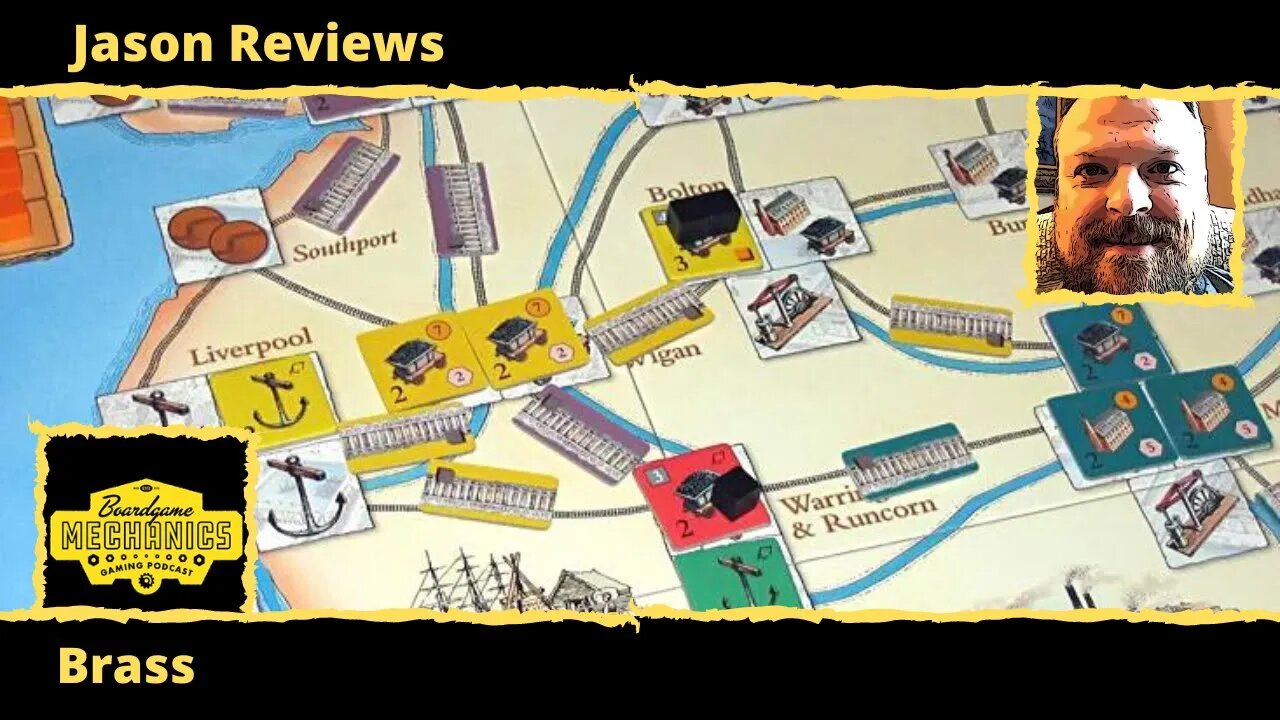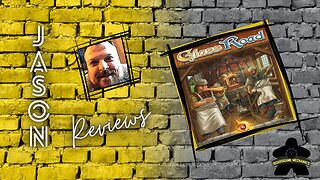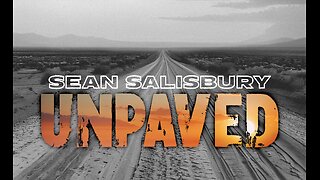Premium Only Content

Jason's Board Game Diagnostics of Brass
#JasonReviews #BoardgameMechanics #Brass
0:00 - Intro
0:06 - Title Screen
0:25 - Description of the Game
1:19 - Gameplay Overview
36:10- Final Thoughts
38:44 - Credits
Brass is an economic strategy game that tells the story of competing cotton entrepreneurs in Lancashire during the industrial revolution. You must develop, build, and establish your industries and network so that you can capitalize demand for iron, coal and cotton. The game is played over two halves: the canal phase and the rail phase. To win the game, score the most victory points (VPs), which are counted at the end of each half. VPs are gained from your canals, rails, and established (flipped) industry tiles. Each round, players take turns according to the turn order track, receiving two actions to perform any of the following:
Build an industry tile
Build a rail or canal
Develop an industry
Sell cotton
Take a loan
At the end of a player's turn, they replace the two cards they played with two more from the deck. Turn order is determined by how much money a player spent on the previous turn, from lowest spent first to highest spent. This turn order mechanism opens some strategic options for players going later in the turn order, allowing for the possibility of back-to-back turns.
After all the cards have been played the first time (with the deck size being adjusted for the number of players), the canal phase ends and a scoring round commences. After scoring, all canals and all of the lowest level industries are removed for the game, after which new cards are dealt and the rail phase begins. During this phase, players may now occupy more than one location in a city and a double-connection build (though expensive) is possible. At the end of the rail phase, another scoring round takes place, then a winner is crowned.
The cards limit where you can build your industries, but any card can be used for the develop, sell cotton or build connections actions. This leads to a strategic timing/storing of cards. Resources are common so that if one player builds a rail line (which requires coal) they have to use the coal from the nearest source, which may be an opponent's coal mine, which in turn gets that coal mine closer to scoring (i.e., being utilized).
—description from the publisher
For more information about Brass:
https://boardgamegeek.com/boardgame/28720/brass-lancashire
To check out a little bit of everything that we do visit our website at: https://www.bgmechanics.com
Like us on Facebook:
https://www.facebook.com/theboardgamechanics
Follow us on Instagram:
http://www.instagram.com/boardgamemechanics
Tweet at us on Twitter: https://twitter.com/bgmechs
If you would be interested in having us review/preview a game, or just want to chat, shoot us an email at: contact@bgmechanics.com
-
 5:57
5:57
The Boardgame Mechanics
10 days agoThe Boardgame Mechanics Review Glass Road
-
 18:29
18:29
The Rad Factory
1 day ago $3.24 earnedBuilding Shred Eighty a Custom Honda Snow Kart
47.2K6 -
 UPCOMING
UPCOMING
Precision Rifle Network
1 day agoS4E7 Guns & Grub - What makes group size increase?
31.9K2 -
 46:29
46:29
SGT Report
1 day agoAMERICA IS BACK! BYE BYE IRS!! -- Sam Anthony
70.7K97 -
 8:56:13
8:56:13
Dr Disrespect
16 hours ago🔴LIVE - DR DISRESPECT - WARZONE - 150 PLAYER LOBBIES
187K20 -
 1:27:35
1:27:35
Redacted News
11 hours ago"This is NOT normal" Trump just destroyed the woke mob as Dems in disarray | Redacted News Live
171K299 -
 1:39:52
1:39:52
Vigilant News Network
12 hours agoUNHINGED: Dems Say That Elon Needs to ‘Go Back to AFRICA?’ | The Daily Dose
108K25 -
 1:13:13
1:13:13
Sean Unpaved
12 hours ago $7.35 earnedQB Carousel with Guest Coach Herm Edwards
90K3 -
 1:04:28
1:04:28
Crypto Power Hour
1 day ago $6.27 earnedThe Crypto Power Hour - ‘In Crypto We Trust’
86.8K8 -
 28:55
28:55
CatfishedOnline
11 hours agoWoman Love Bombed by Salt-and-Pepper Scammer
52.5K7